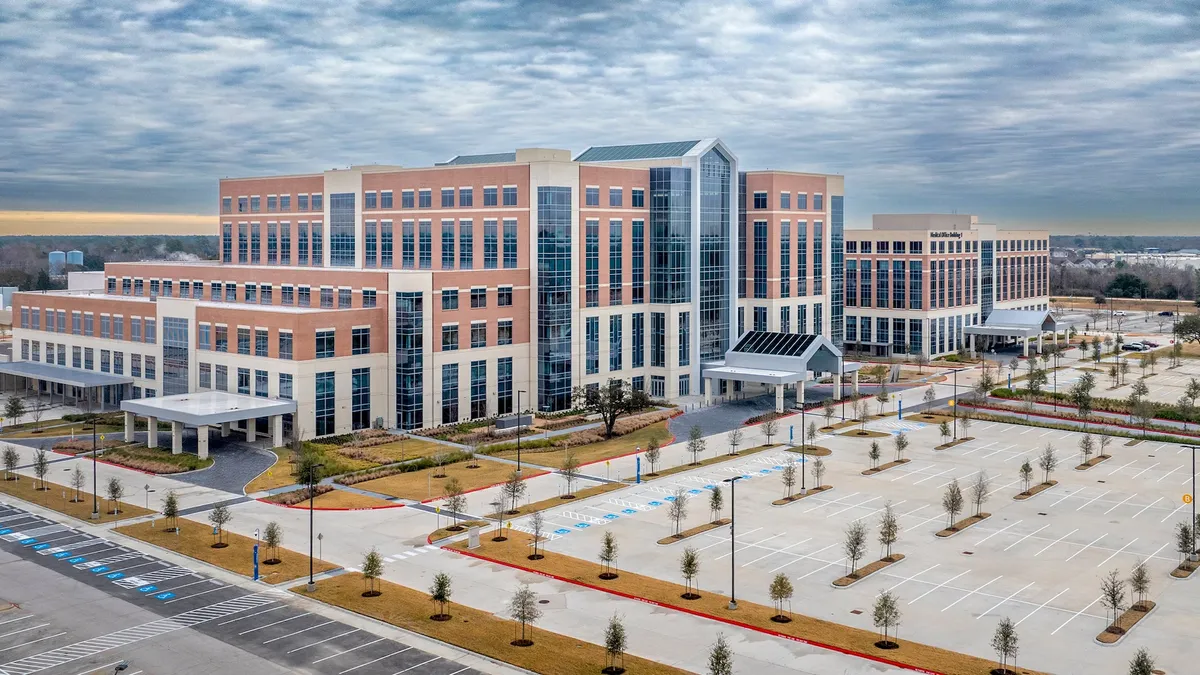Damage caused by Hurricane Ian’s massive storm surge, flooding and winds will require skilled workers to help the state of Florida rebuild. Staffing the projects to restore the state is easier said than done.
Both Florida and the U.S. as a whole have many job openings and few skilled laborers. As some projects in the state halt, they may free tradespeople for other vital work.
Construction already faced a drying well of skilled members of the workforce, and the industry has over half a million jobs to fill nationwide. Aiding Florida is a priority, but could also have ripple effects around that high demand, industry experts told Construction Dive
Hurricane Ian slammed across Florida last week, causing billions of dollars in property damage, displacing residents from their homes and claiming more than 100 lives. Destructive floods and high winds tore into buildings and infrastructure, like the Sanibel Island causeway.
There is no set timeline for recovery, and the rebuilding process will first require a full assessment of the damage. Some buildings will need to be replaced or restored, others demolished, according to Ken Simonson, chief economist for Associated General Contractors of America.
“Many decisions are interrelated,” said Simonson. “Building reconstruction or replacement on an island may have to await reestablishment of a bridge or causeway. Building codes or seawalls may need revising. Owners must decide if the location and local economy still warrant living or operating a business in that structure, especially if insurance or other costs change.”
The recovery effort will require boots on the ground. Construction job openings rose by 407,000 in August, a 12.4% increase from a year before, and 54,000 more than in July.
The number of seasonally adjusted employed construction workers in Florida reached 593,800 in August, according to the Bureau of Labor Statistics. That was an increase of 3.3% from August 2021.
Nevertheless, unemployment for job-seekers with construction experience was nearly 4% in August nationwide, close to an all-time low for the month, and close to the all-industry rate. Florida’s low, industry-wide rate of unemployment was 2.7%, an all-time low since 2006.
“Together, these figures suggest there are many openings and few experienced construction workers looking to fill them, both nationally and in Florida,” Simonson said.
Demand will only increase for those workers now that Ian has created the need for more construction projects.
“We are experiencing a significant shortage of skilled labor not only in Florida but the entire country,” said Steve Cona, president and CEO of Associated Builders and Contractors’ Florida Gulf Coast chapter. “After a disaster like Hurricane Ian, those numbers will go up significantly.”
A concern, not a crisis
Even with a high demand for workers that may not be met, the work will still attract skilled employees to the region.
“Construction companies and workers have an admirable record of responding swiftly to disasters and emergencies,” Simonson said, indicating he assumed crews arrived on the scene as soon as they could. “Also, it is likely that some projects that were underway or about to start will now be canceled or postponed, freeing up some workers and materials that would not otherwise have been available.”
Federal and state financial resources may help bring some of those workers to Florida, Cona said. But that won’t change the nationwide demand for workers, so other regions may feel the effect of Florida’s draw.
That demand will likely translate to higher wages, as laborers could look to elevate their pay as high as they can.
Looking ahead for Florida
Both Simonson and Cona said Ian will likely have little long-term impact on Florida’s economic outlook as a place to live or visit.
“Florida continues to have a significant number of people moving to the state and now adding rebuilding efforts in the state the demand for skilled workers will remain strong,” Cona said.
Simonson added that some areas, like New Orleans after Hurricane Katrina in 2005, never fully regained their population or tourism from before the storms. Nevertheless, several hurricanes that hit Florida in the mid-aughts, Simonson said, did little long-term damage to the state’s economy and population growth.
“I don't foresee Ian as changing the attractiveness of Florida overall as a destination for permanent residents, ‘snowbirds,’ vacations and convention-goers, although specific venues and towns are likely to be affected for quite some time,” Simonson said, adding that he is scheduled to speak at a Florida event next month, and hasn’t heard any cancelation news yet. “I expect Florida will continue to attract construction projects and the firms and workers to execute them.”






















